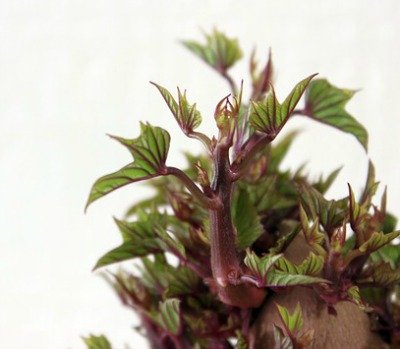Totipotency, also called totipotentiality, refers to the ability of many cells to retain the full genetic potential characteristic of the mature organism from which any of the cells were obtained, and thus enable the cell to regenerate the organism’s tissues and organs under favorable conditions.
The possibility of regenerating an entire plant from a single or few non-zygotic cells was proposed by Gottleib Haberlandt (1854-1945) in 1902.
Haberlandt is now popularly called the Father of Tissue Culture.
This ability to regenerate the missing parts of a mature plant has already been known many times in the distant past.
This is the case when vegetative organs or parts, such as tubers, storage roots, and plant cuttings are used to propagate plants.
Haberlandt’s Prophetic Prediction
It was Haberlandt who proposed that the concept could apply to individual somatic cells.
Somatic cells of vegetative cells are those found in vegetative parts of plants or those cells with the exception of the zygotic, or embryonic, cells.

Haberlandt first attempted to culture isolated somatic cells, such as photosynthetic cells from leaf bract mesophyll (Sussex 2008), of higher plants using tissue culture techniques.
He started working in 1898 in Graz, Austria and published his results in 1902.
He wanted to demonstrate totipotency but he failed, not having succeeded in inducing cell division.
Nevertheless, his following prediction proved prophetic: “…I believe, in conclusion, that I am not making too bold a prediction if I point to the possibility that, in this way, one could successfully cultivate artificial embryos from vegetative cells.” (Sussex 2008).
It is now well established that differentiated cells, those cells which are performing special functions, have the ability to transform into embryonic cells which in turn have the ability to proceed into the usual sequences involved in plant development.
Consequently, his tissue culture or in vitro techniques also found many applications in various fields including micropropagation (Murashige 1974).
Coining of the Term Totipotency and the Final Proof
It was probably Thomas Hunt Morgan of Bryn Mawr College, Pennsylvania who coined the term totipotency in his book Regeneration published in 1901.
In discussing the Theories of Isotropy and Totipotence of Cells, particularly on the cleavage of a frog’s egg, he introduced the term in the following manner: “If we substitute the term “totipotence,” meaning that any meridian of the egg has the possibility of becoming the median plane of the embryo, in place of Pflüger’s term “isotropy,” we remove this element of possible error from his statement.” (Morgan 1901).
In 1958, Frederick C. Steward (1904-1993) and colleagues at Cornell University succeeded in producing plants from segments prepared from the taproot of carrot using tissue culture techniques.
These small explants consisted of differentiated secondary phloem cells.
Steward first prepared small fragments (each weighing about 2 mg) of the carrot root and cultured these in a nutrient solution containing sugar, minerals, and vitamins.
He also added coconut water.
Coconut water (the liquid endosperm which was previously called coconut milk) is now known to contain cytokinin, a plant hormone that induces cell division.
The addition of coconut water in the culture medium made a difference compared to Haberlandt and other researchers.
Cells soon separated from the mass of callus that formed from root segments.
Later, they divided and redifferentiated to form the various specialized types of cells needed to produce intact plants.
The tobacco plant (Nicotiana tabacum) is likewise a commonly used specimen in demonstrating cell totipotency and plantlet regeneration, particularly from the pith tissue in the center of the stem.
Tiny segments of the pith (about 2 mm cubes) when grown in nutrient solution will give rise to a mass of undifferentiated cells called callus.
Eventually, these undifferentiated cells will redifferentiate and give rise to plantlets that are capable of developing into intact plants when grown outdoor.
This is a common laboratory exercise in plant growth and development.
Application of Totipotency in Plant Propagation and Where It is Absent
Haberlandt’s pioneering plant cell culture study and the establishment of totipotency also provided a huge leap in plant propagation.
Many important agricultural crops are now mass-produced through tissue culture.
A few examples are orchids, banana and plantains (Musa spp.), and abaca (Musa textile).
Many species of orchids have been propagated using explants prepared from shoot tips, leaf tips, root tips, and young inflorescences.
Many more types of tissues have been found totipotent in many other plant species (Murashige 1974).
Conversely, some highly specialized cells are not totipotent and cannot be induced to differentiate.
According to Hopkins (1999), it may be due to the enveloping cell walls which are exceptionally thick and rigid, or due to severely modified protoplasts.
However, he also suggested that all tissues may have at least some cells which are potentially totipotent.
REFERENCES
HOPKINS WG. 1999. Introduction to Plant Physiology. 2nd ed. New York, NY: ohn Wiley & Sons, Inc. 512 p.
MORGAN TH. 1901. Regeneration. London: MacMillan & Co., Ltd. p. 242. Retrieved Nov. 9, 2014, from http://www.biodiversitylibrary.org/item/15810#page/1/mode/1up.
MOORE R, CLARK WD, VODOPICH DS. 2003. Botany. 2nd ed. Boston, Massachusetts: McGraw-Hill. 919 p.
MURASHIGE T. 1974. Plant propagation through tissue cultures. Ann. Rev. Plant Physiol. 25:136-166.
SUSSEX IM. 2008. The scientific roots of modern plant biotechnology. The Plant Cell. 20(5):118-1198. Retrieved Nov. 9, 2014 from http://www.plantcell.org/content/20/5/1189.full.
